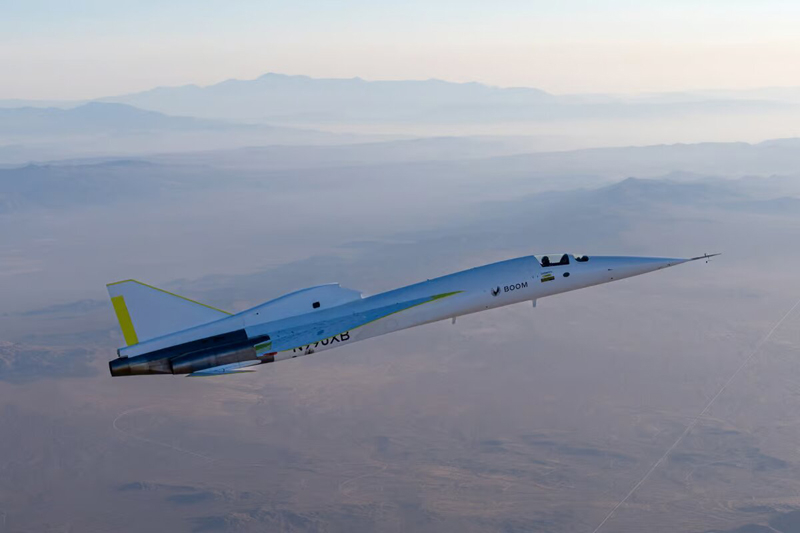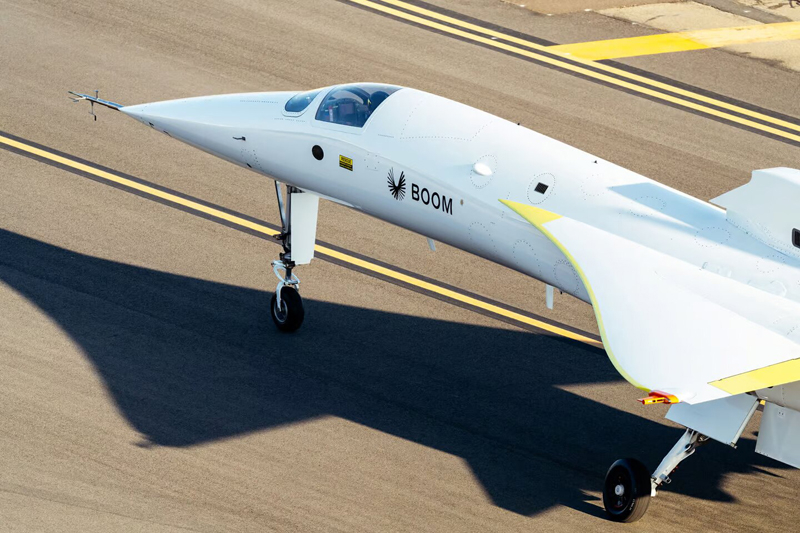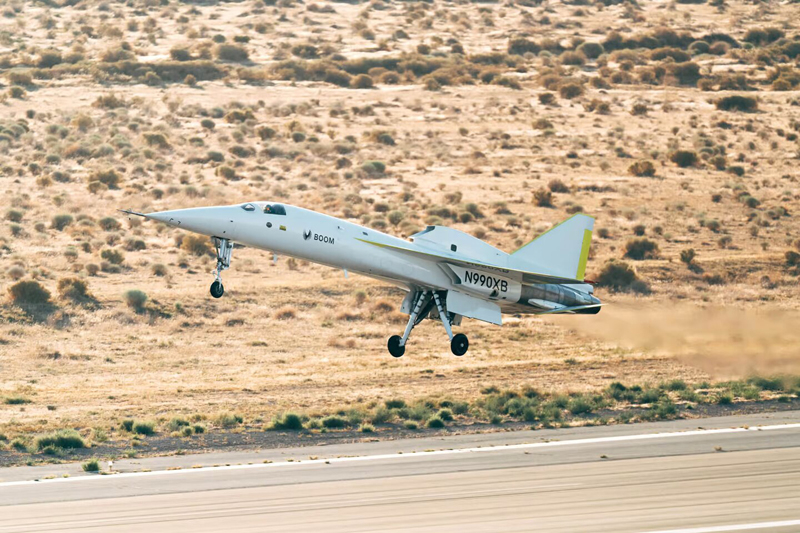The demonstrator of the supersonic aircraft XB-1 from Boom Supersonic completed its second test flight, writes the New Atlas resource. On August 26, the XB-1 prototype, piloted by chief test pilot Tristan Brandenburg, flew for 15 minutes over the Mojave Desert in California.

Image Source: Boom Supersonic
Taking off from the Mojave Aerospace Port, the XB-1 prototype reached an altitude of 3170 m and reached a speed of 445 km/h. In its first test flight, the demonstrator climbed to an altitude of 2170 m and reached the same speed of 445 km/h.
The task list for the current test flight included, for the first time, retracting and deploying the landing gear, as well as checking the prototype’s handling and activating a new digital stability system to dampen roll to help maintain control in stall conditions. In addition, the XB-1’s right wing was equipped with tufts of fabric fibers to control the direction and strength of airflow over the wing.

The ultimate goal of XB-1 testing is to create the Overture supersonic airliner, which will be the successor to the discontinued Concorde. The new model received a fuselage design that will avoid sonic boom when switching to supersonic flight, which will ensure the possibility of its use in the United States. It is reported that the future airliner will also have optimized aerodynamics, a body made of carbon composites, improved air intakes for supersonic engines and an augmented reality system for navigation during takeoff and landing.

According to Boom Supersonic, flight tests of the XB-1 will include approximately 10 subsonic flights at higher altitudes and speeds, during which all systems will be checked and the safety of the device when entering transonic and supersonic modes will be checked. Once the XB-1 reaches supersonic speeds, testing will take place in the Black Mountain supersonic corridor at Edwards Air Force Base in California.